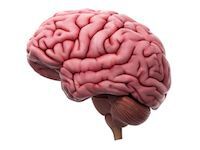
What is Biofeedback Therapy/Training?
Different feelings we have can cause changes in our bodies. For example, when we feel angry or scared our heart beats faster. Our muscles become tense, we breathe faster and our breaths are shorter. In biofeedback therapy, you work with a health professional to learn how to gain more control over the way your body responds to certain feelings.
How does biofeedback work?
We don’t completely understand how biofeedback works. But we do know the body reacts to thoughts, feelings, and emotions. Learning how to change these reactions can help treat many different health problems. All types of biofeedback work by connecting you with a device that measures one of your body’s functions. Some use temperature, heart rate, brain waves, or muscle tension. Often you will watch at the measurements on a big screen as your body is responding. Then you will learn how to use breathing and relaxation techniques to help regulate that function.
What Is Biofeedback Used For?
These are just some of the health problems biofeedback can be used for:
- Headaches
- Migraines
- Seizure Disorders
- Anxiety
- ADHD
- Chronic Pain
- Urinary Incontinence
- Constipation
- Raynaud’s Disease
- Rheumatoid Arthritis
- High Blood Pressure
- Asthma
In biofeedback, you are an active player in the process. Sometimes you could be asked to think about something stressful. This can help you understand better how you respond to stress. The professional you are working with will be able to support you if the experience feels too difficult. Biofeedback is extremely safe.
Do I need to prepare for sessions and what should I expect when going to my first session?

You do not need to prepare before getting biofeedback. The sessions usually last around 30 minutes. Benefits from biofeedback may be seen within 10 sessions or less. Some conditions may take more than 20 sessions to see benefits.
Print Version
References/Resources
Rakel D. Headache. In: Integrative Medicine. 3rd ed. Philadelphia, Pa.: Saunders Elsevier; 2012. http://www.clinicalkey.com. Accessed Nov 15, 2016.
Frank DL, et al. Biofeedback in medicine: Who, when, why and how? Mental Health in Family Medicine. 2010;7:85.
Whitney A. Biofeedback: A way to gain some control over pain. Current Pain Perspectives. 2014;63:S12.
6 things to know when selecting a complementary health practitioner. National Center for Complementary and Integrative Health. https://nccih.nih.gov/health/tips/selecting. Accessed Nov. 15, 2016.
Newman, D. and Burgio, K. Conservative Management of Urinary Incontinence. Campbell-Walsh Urology 11th ed., 80, 1875-1898.e4; 2016. http://www.clinicalkey.com. Accessed Nov 15, 2016.
Tan, G., Thornby, J., Hammond, D. C., Strehl, U., Canady, B., Arnemann, K., et al. (2009). Meta-analysis of EEG biofeedback in treating epilepsy. Clin. EEG Neurosci. 40, 173–179.
Safety of Biofeedback. ICBS, inc. http://www.holisticonline.com/Biofeedback-safety.htm. Accessed Nov 16, 2016.
Patient Education Materials
- Acupuncture
- ADHD
- Allergic Rhinitis
- Anxiety
- Aromatherapy
- Asthma
- Autism
- Back Pain
- Breathing Techniques
- Cancer Symptoms
- Chiropractic
- Constipation
- Depression
- Diabetes
- Dyslipidemia
- Eczema
- Elimination Diet
- Fibromyalgia
- GERD
- Headache
- Healthy Diet
- Healthy Weight / Obesity
- Heart Disease
- High Blood Pressure
- Inflammatory Bowel Disease
- Insomnia
- Irritable Bowel Syndrome (IBS)
- Massage Therapy
- Meditation
- Menopause
- Menstrual Disorders
- Osteoarthritis
- Physical Activity
- Probiotics
- Progressive Muscle Relaxation
- Rheumatoid Arthritis
- Supplements
- Tai Chi
- Yoga